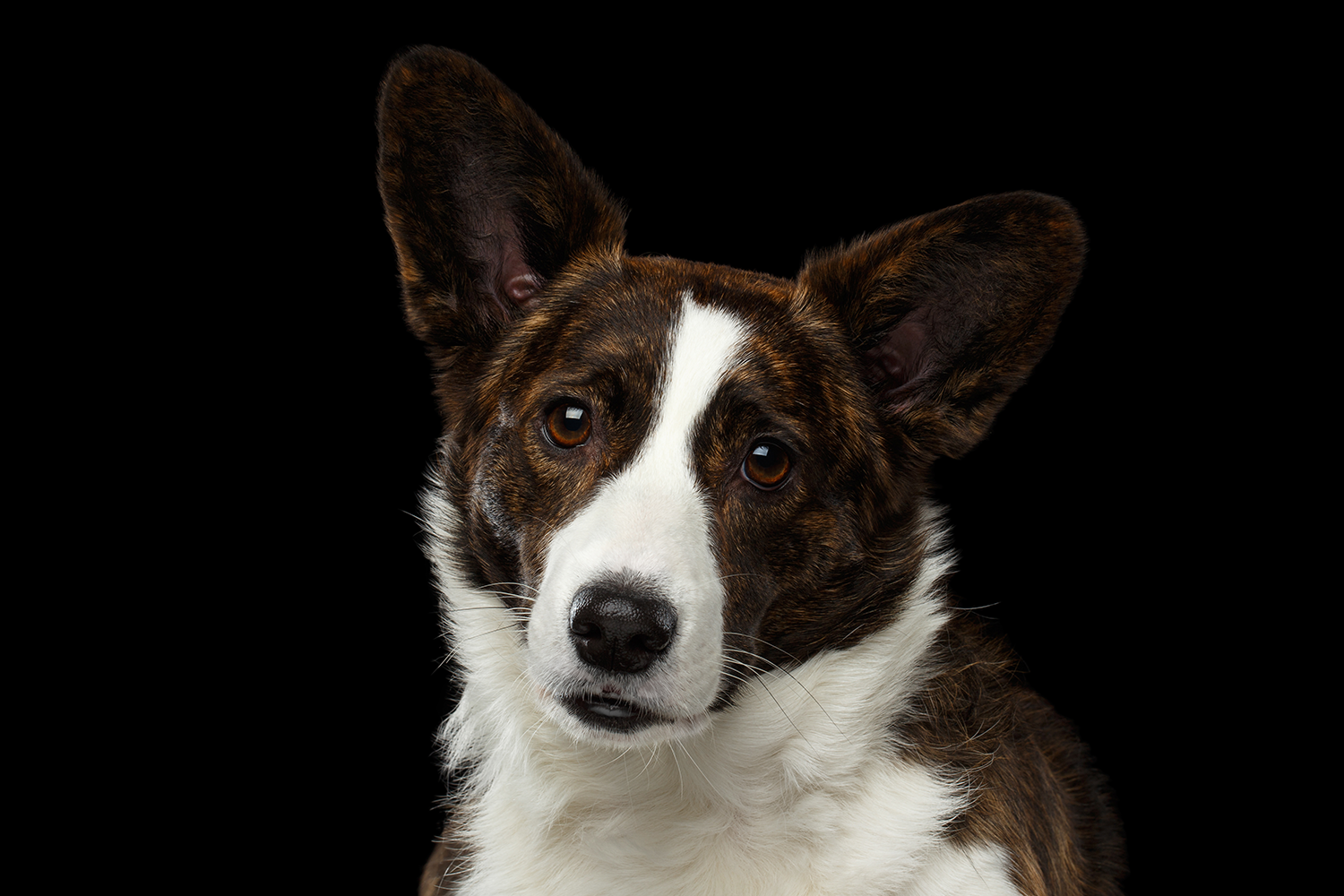Atopic dermatitis: the itchy dog
It's the middle of the night and from the corner of the room or the end of the bed (no judgement), you hear slurp, slurp, schmack, slurp or thump, thump, thumpity thump.
Your dog is at it again – licking, chewing or scratching. Both of you are being driven nuts.
Let's understand why and what can be done about one of the most common and frustrating causes of canine itch – atopic dermatitis.
What is atopic dermatitis?
Atopic dermatitis is inflammation of the skin due to allergy. An allergy is an altered (exaggerated) immune response to a normally harmless substance in the environment.
Atopic dermatitis is often just called ‘atopy’. You may have heard that term before in the context of the human allergic conditions: rhinitis (hay fever), asthma and eczema – also called the atopic triad.
You can think of your dog’s atopy a bit like a person having eczema.
Unlike eczema, which commonly affects infants, dogs don't usually have atopy as pups. In fact, it unusual for signs to be reported before a year of age. It may be that the itch and skin changes are just very mild in younger dogs and not so noticeable. Generally, affects dogs start showing signs between 1 and 3 years of age.
If you're interested in reading about the similarities and differences between allergic skin disease in people and animals, you might like this article: Atopic Dermatitis in Animals and People: An Update and Comparative Review.
What is my dog allergic to?
Unless we allergy testing, we can't really say what your dog is allergic to. But common causes are:
- pollens (from grasses, weeds and trees)
- moulds
- dust mites and storage mites
- skin cells of other animals (dander)
Pollen allergies are very common. If your dog gets itchy (or has worse itch) during certain times of the year, she might have a pollen allergy because these are usually seasonal. For example:
- grasses (eg ryegrass) start pollinating (releasing pollen) in late spring and go through to late summer
- weeds (eg ragweed) usually pollinate late summer
- trees (eg plane trees) pollinate early spring
The Australia Society of Clinical Immunology and Allergy have a nice pollen calendar if you want to know when common allergenic plants are going gangbusters.
While moulds can cause allergies all year round, there are often spikes during spring and autumn.
Food allergies can also cause skin problems, but these are separate from atopy. While Some pets are unlucky enough to have both atopy and food allergies.
How did my dog become allergic?
Atopy is an inherited condition – your dog has a genetic predisposition to react to environmental allergens. The genetic cause explains why some breeds are more prone to atopy than others.
Affected dogs have areas of skin (see below) that don't have a normal barrier function. Normal skin cells are tightly packed together – like bricks with good quality mortar. With atopic skin, the cells have ‘gaps’ between them – like a dry stone wall. These gaps let water out (leading to dry, flakey skin) and let allergens in (where they stimulate the immune system).
The immune system of affected dogs is also abnormal. It over reacts to the allergens and releases loads of inflammatory chemicals which create redness, swelling and itch.
To make things worse, the barrier doesn’t just fail when it comes to allergens, it also fails to keep out the bacteria and yeasts (microbes) living on the skin. So atopic dogs often have secondary infections too. These keep the immune system firing off creating more inflammation and more itch.
How is atopy treated?
It's important to understand that atopy is not curable. Treatment aims to control itching and improve quality of life. There are several treatment options, but none of them will make your dog itch-free forever.
Before we start talking about atopy treatments, we do need to make sure that other causes of itch are dealt with. This means using good quality flea prevention, treating skin infections and sometimes ruling out hormonal conditions that affect the skin (eg Cushing's disease and thyroid disease).
Now let's look at ways of controlling atopy.
NON-DRUG THERAPY
This is always a good place to start, especially if your dog is only mildly itchy. Options include:
- bathing – this physically removes allergens from the skin and reduce bacterial and yeast numbers. When bathing involves the use of a moisturiser, it can also improve the skin barrier. Some shampoos contain moisturisers, but you can use a basic shampoo (even baby shampoo) as long as you use a conditioner/moisturiser afterwards. There's good evidence from human medicine that 'oily' moisturisers are better than water-based ones for improving skin health and even preventing atopy. Pawpaw cream (which is mainly high-quality petroleum jelly) or coconut oil can be used – obviously stick to the skin areas that are most affected (eg armpits, belly, between toes) and avoid the really hairy bits!!
- wiping down – if washing the allergens off is a bridge too far, consider wiping your dog's coat and feet down (at least) once daily to physically reduce the allergen burden
- clipping the coat short – you might think that having a thick fur coat would help prevent allergens getting to the skin, unfortunately the fur just acts like a dust/pollen catcher gathering all the outdoor allergens and then dropping them off in your dog's bed
- fatty acids – there is some evidence that eating omega-3 fatty acids (eg fish oils) helps reduce atopy symptoms. It's unlikely that daily fish oil capsule alone will control symptoms but it may reduce the severity or frequency of flare-ups
OVER-THE-COUNTER ALLERGY DRUGS
You can use over-the-counter antihistamines for your dog's allergies. They can be really quite helpful in some dogs, but they're really unlikely to control an acute or severe flare up. They're often most be useful if started before the time of the year that your dog has a flare up, they then might decrease the need for other medication.
There are two basic categories of antihistamines:
- the older (first generation) ones, which tend to cause drowsiness (in people more than pets) and have a shorter duration of action (but are usually very inexpensive)
- the new (second generation) ones, which cause less sedation and are more anti-inflammatory (but relatively more expensive)
Both sorts can be used safely in dogs, but because people don't always want to be sedated, the second generation ones tend to be the ones on the supermarket and pharmacy shelves.
Here are some antihistamine dosages for dogs:
- dexchlorpheniramine (Polaramine®) – this is a first gen. It is available as 2 or 6 mg tablets. The dose is one 2 mg 2–4 times a day for dogs under 15 kg and one 6 mg tablet 2–4 times a day for dogs over 15 kg
- promethazine (Pherergan®) – this is also a first gen. It is available as 10 and 25 mg tablets and 5 mg/ml elixir. The dose is 1 mg/kg twice daily
- fexofenadine (Telfast®) – this is a second gen. It is available as 60 mg capsules and 120 or 180 mg tablets. The dose is 5–10 mg/kg once or twice daily (don't use if your dog is on ketoconazole or a macrolide antibiotic)
- loratadine (Claratyne®) – also second gen. It is available as 10 mg tablets. The dose is 5–20 mg/dog once daily
- cetirizine (Zyrtec®) – also second gen. It is available as 10 mg tablets and either 1 mg/ml or 10 mg/ml oral solution. The dosage is 5–20 mg/dog once daily
PRESCRIPTION MEDICATION
Often we need prescription medication to control atopic symptoms. There are several different types of drugs, although most act to reduce the immune response to allergens. As with all treatments, we need to weigh up the individual benefits and harms for your dog.
Remember, these drugs treat but don't cure atopy – the itch can back when the treatment stops!
Here are some common drugs used for atopy:
- corticosteroids (prednisolone, dexamethasone) – are inexpensive and usually work well to reduce itching. However, they do have numerous short-term side effects (eg increased drinking, urinating, eating, panting) and when used longer term they can negatively affect the liver, hormones and the skin barrier. Some dogs just don't handle cortisone well and it makes them feel awful – note that we have to taper the dose of cortisone rather than stopping suddenly
- oclacitinib (Apoquel®) – works well and quickly to help itching with very few side effects. However, it's expensive, especially if you have a large dog. After an initial twice daily course, most dogs can go to once daily but you may notice the itchiness starts coming back around the 24-hour mark
- cyclosporine (Atopica®) – this can be helpful for many pets with overactive immune systems, but it's expensive and as it's used over a longer-term, it may not be affordable for larger dogs. It can cause upset tummies, strange infections (due to immune suppression), gum problems and may increase the risk of cancer
IMMUNOTHERAPY (DESENSITISATION OR 'ALLERGY SHOTS')
Immunotherapy involves allergy testing to identify what your dog is allergic to. Then an individual formulation containing those allergens is made up. This is given to your dog by injection – starting with tiny doses and progressively increasing the dose over time. As the dose amount increases, the frequency it's given reduces.
These injections aim to desensitise the immune system to the allergen. While it's a pretty involved and expensive process, over the long term it can work out to more effective (in controlling symptoms and in terms of cost) than other treatments. Immunotherapy is also safe and has no negative effects on the immune system.
If you're interested in this option, we can refer you to a dermatologist.
If you would like to book an appointment to discuss atopy or any other itchiness, let us know you're dog has a skin problem so we can schedule a long consultation. Don't worry, there's no extra charge, we just need extra time for skin problems.




